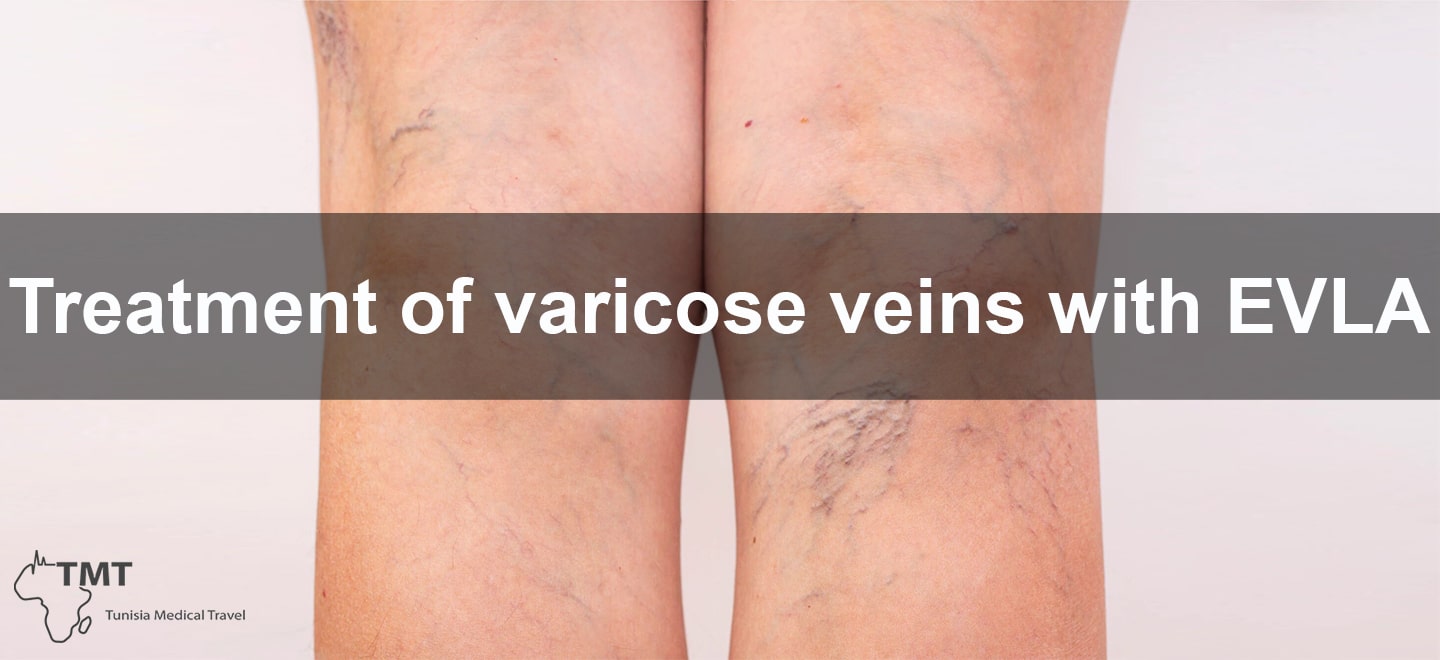Treatment of varicose veins with EVLA
Treatment of varicose veins with Endovenous laser therapy
What are the benefits of Endovenous Laser therapy?
Endovenous laser therapy (EVLT) is a minimally invasive procedure that uses laser energy to seal off malfunctioning veins, which is a common cause of varicose veins. The main benefits of EVLT include:
- Minimally invasive: EVLT is a minimally invasive procedure that does not require general anesthesia or a hospital stay. The procedure is performed using local anesthesia and involves only a small incision.
- High success rate: EVLT has a high success rate, with most patients experiencing significant improvement in their symptoms.
- Low complication rate: EVLT has a low complication rate, which means that complications from the procedure are rare.
- Quick recovery: EVLT patients typically recover quickly and can return to normal activities within a few days.
- Long-term results: EVLT can provide long-term results with little or no recurrence of varicose veins.
- Improving appearance: EVLT can improve the appearance of varicose veins, which can be embarrassing or cosmetically unappealing.
- Relief of symptoms: EVLT can provide relief of symptoms such as aching, fatigue, cramps, itching, burning and heaviness in the legs, and swollen ankles.
- No scarring: EVLT does not leave scarring, as the incision is so small and the procedure is done under ultrasound guidance, minimizing the risk of injury to the surrounding tissue.
It is important to note that EVLT may not be suitable for everyone. Your doctor will evaluate your medical history and the condition of your veins to determine if EVLT is the right treatment for you.
What are the main causes of the occurrence of varicose veins?
The main cause of varicose veins is chronic venous insufficiency (CVI), which is a condition that occurs when the valves in the veins that are responsible for keeping blood flowing in the right direction are damaged or not functioning properly. This causes blood to flow in the wrong direction and pool in the lower leg veins, causing them to become enlarged, twisted, and visible through the skin.
There are several factors that can contribute to the development of CVI and varicose veins:
- Genetics: Some people are more susceptible to developing varicose veins due to genetic factors. If someone in your family has varicose veins, you may be more likely to develop them as well.
- Age: As you get older, the valves in your veins can weaken, making it more likely for them to malfunction and cause CVI.
- Pregnancy: The weight of a growing fetus can put added pressure on the veins in the legs, making it more likely for them to become varicose.
- Obesity: Being overweight can put additional pressure on the veins in the legs, making it more likely for them to become varicose.
- Prolonged standing or sitting: People who have jobs that require prolonged periods of standing or sitting are at a higher risk for developing varicose veins.
- Hormonal changes: Some hormonal changes can also contribute to the development of varicose veins, such as those that occur during menopause and pregnancy.
It is important to note that not all varicose veins require treatment and that some people may have varicose veins without experiencing any symptoms. However, if varicose veins are causing discomfort or other symptoms, a doctor or specialist can evaluate the best treatment options for you.
What are the symptoms of varicose veins?
The symptoms of varicose veins can vary depending on the severity of the condition. Common symptoms include:
- Visible, twisted, and enlarged veins: Varicose veins are often visible just under the skin and can be blue or dark purple in color. They may appear twisted and bulging and can be swollen and raised.
- Aching, fatigue, cramps, itching, burning and heaviness in the legs: The legs may feel achy, tired, and heavy, especially at the end of the day. Some people may experience cramps or an itching sensation in the affected area.
- Swollen ankles: The ankles may swell due to fluid buildup in the legs.
- Skin changes: Some people with varicose veins may develop pigmentation (darkening) or eczema (itchy, scaly, red rash) in the affected area.
- Skin ulceration: In advanced stages, varicose veins can cause skin ulcers (open sores) on the legs.
It is important to note that not everyone with varicose veins will experience symptoms, and some people with varicose veins may only experience mild symptoms or no symptoms at all. However, if varicose veins are causing discomfort or other symptoms, a doctor or specialist can evaluate the best treatment options for you.
Results after an EVLA
Endovenous laser ablation (EVLA) is a minimally invasive procedure used to treat varicose veins. The procedure uses laser energy to heat and close the affected vein, causing blood to redirect to healthier veins. The results of EVLA can include a significant reduction in the appearance of varicose veins, a decrease in symptoms such as pain and swelling, and an improved overall appearance of the legs. It’s important to note that the procedure may not be a permanent solution, and some patients may require additional treatment. Recovery time is usually short, patients can walk immediately after the procedure, but should avoid strenuous activity for a week.

